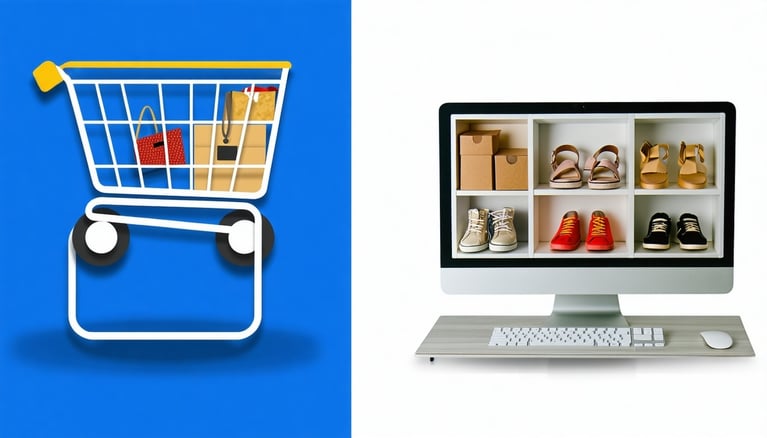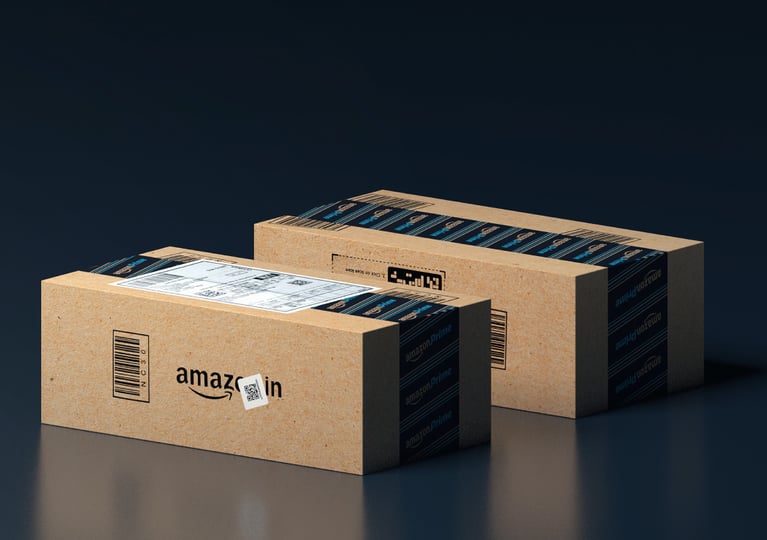Amazon Prime Day has become THE mid-year sales event. The numbers speak for themselves: Prime Day 2024 generated an unprecedented $14.2 billion in sales, setting a new record for the shopping event. Looking ahead, Prime Day 2025 is projected to extend to a full four-day duration, creating even more opportunities for brands to capture market share and drive revenue growth.
For brands aiming to outperform competitors and maximize returns, a traditional Sponsored Products approach is no longer enough. Instead, most forward-thinking brand owners are turning to Amazon DSP services to deliver an omnichannel, full-funnel Amazon advertising strategy that reaches customers across devices, platforms and stages of the buyer’s journey.
Why Amazon DSP is a game-changer for Prime Day
Amazon DSP (Demand-Side Platform) is Amazon’s programmatic advertising solution. Unlike basic advertising tools, Amazon DSP functions as a marketing solution that automates media purchasing while providing access to first-party Amazon audiences and cross-channel placements.
Through Amazon DSP, ads can appear across:
- Amazon.com, Prime Video, Twitch, Fire TV, Alexa, and Kindle
- Amazon Fresh kiosks and connected in-store placements
- Thousands of premium third-party sites and apps via Amazon Publisher Direct
Why leading brands are prioritizing DSP for Prime Day
Prime Day is a key acquisition moment, especially for winning new-to-brand (NTB) customers. The platform's sophisticated targeting capabilities allow you to identify and engage high-value prospects who may not have discovered your brand through traditional channels.
Additionally, Amazon DSP allows you to:
- Re-engage high-intent shoppers who browsed but didn’t buy. This is particularly valuable during Prime Day when consumers research extensively before making decisions.
- Serve rich media creatives across multiple high-impact touchpoints.
- Align perfectly with modern consumer discovery and purchase behavior, which is increasingly non-linear and cross-platform.
Pre-Prime Day planning: laying the groundwork for success
1. Launch awareness campaigns early
To cut through the noise, top-performing brands begin running in-market awareness campaigns by mid-June. This gives DSP algorithms enough time to learn and optimize while warming up key audience segments.
Use DSP to:
- Target category-intent users who are actively browsing similar products
- Direct traffic to your Amazon Storefront or product detail pages
- Prime NTB audiences with upper-funnel creatives before heavy competition spikes
This early investment in awareness pays dividends when Prime Day traffic intensifies and consumers make rapid purchase decisions.
2. Refine audience segmentation
Audience granularity is where DSP shines. Build segmented campaigns to address:
- NTB prospects using lookalike modeling and contextual purchase behavior
- Loyal or repeat customers with messaging that reinforces brand affinity
- Lifestyle and interest segments aligned with your brand persona
Tap into Amazon’s first-party data to build custom audiences around purchase intent, views, searches and even Prime Video or Twitch engagement.
3. Retarget and reallocate budget strategically
Retargeting becomes particularly important for niche products or items that traditionally see lower sales during promotional periods. You can also re-engage warm leads who have shown interest in your products but haven't yet converted. This strategy helps ensure that your less obvious Prime Day candidates still capture their share of the increased shopping activity.
To stay competitive:
- Increase daily budgets leading up to the event
- Implement dayparting to optimize for peak traffic periods
- Use automation to manage spend fluctuations in real time
4. Choose the right ad units
Consumers don’t discover in a straight line, your ad formats shouldn’t either. A balanced DSP strategy includes:
- Display ads for top-of-funnel brand recall
- Video and audio placements for immersive storytelling
- Dynamic retargeting creatives for bottom-funnel conversions
Ensure all creatives are optimized for mobile and aligned with each channel’s context (e.g., entertainment-focused on Twitch, conversion-driven on Amazon.com).
Amazon DSP enables premium ad formats. Best practices include:
- Bold visuals, fast-shipping icons and Prime-exclusive deal tags
- Time-sensitive CTAs like “Shop Now,” “Ends Tonight,” or “Only on Prime Day”
- Consistent branding across creatives to build trust and recall
- For NTB acquisition, highlight brand story, product differentiation, and Prime Day exclusivity
- For loyalists, use value reinforcement like upgraded versions, bundles, or VIP pricing
- Use dynamic, snackable content on streaming platforms
Real-time monitoring and in-flight optimizations
1. Stay on top of performance during launch day
Prime Day success requires active performance monitoring from the moment campaigns launch. From the moment Prime Day starts:
- Track budget pacing, click-through rates conversion performance such as NTB conversion rate
- Adjust audience bids and shift budget toward high-performing products
- Monitor inventory status to pause ads on sold-out products in real time
2. Optimize based on live trends
Successful Amazon advertising strategy implementation requires agility during high-traffic periods. React dynamically to:
- Ad unit and keyword performance by time block
- Surging search interest or external traffic sources
- Emerging product trends and competitive gaps
Pro brands treat Prime Day like a live campaign war room—constant feedback, instant pivots.
Post-Prime Day optimization and future strategy (lead-out period)
1. Post-Prime Day attribution and analysis
Comprehensive performance analysis should begin immediately after Prime Day concludes, focusing on key performance indicators including return on ad spend (ROAS), new-to-brand acquisition rates, and changes in Best Seller Rank (BSR). These metrics provide insight into both immediate campaign success and longer-term brand positioning improvements.
Analyze halo effects and cross-channel influence to understand the full impact of your Amazon DSP services investment. DSP campaigns often drive awareness and consideration that leads to conversions through other channels.
Use Amazon Marketing Cloud (AMC) and audience reports to assess cross-channel lift.
2. Audit and refine audience targeting
The two-week period following Prime Day presents unique opportunities for strategic remarketing. Use Amazon's comprehensive audience tools to retarget non-purchasing page visitors who showed high intent during the event.
Build new-to-brand lookalike audiences from Prime Day buyers to expand your reach to similar prospects. These audiences, based on actual purchase behavior during the event, often perform exceptionally well in subsequent campaigns. Additionally, shrink lookback windows (14-30 days) to re-engage recent visitors while your brand remains top-of-mind.
3. Lead-Out campaigns for extended return on investment
In the two weeks after Prime Day, launch coupon-enhanced retargeting while competition drops off. Measure your post-Prime Day performance against other marketplaces' campaigns during this period. Many competitors launch their own promotional events immediately after Prime Day, so maintaining visibility and competitiveness becomes crucial for sustained momentum.
Using Prime Day insights to fuel year-round growth
Your Amazon DSP strategy shouldn't stop once Prime Day ends. Apply successful targeting strategies, creative approaches and audience insights to Q4 holiday campaigns, when consumer behavior often mirrors Prime Day patterns.
Use the custom audiences developed during Prime Day to jumpstart preparation for Cyber Week and other major shopping events. These audiences, validated through actual purchase behavior during high-stakes promotional periods, often become some of your most valuable targeting assets.
Ready to face Prime Day with a smarter Amazon advertising strategy?
Leveraging Amazon DSP services allows brands to drive targeted, scalable and measurable results throughout the sales funnel.
Connect with our Cart.com’s Growth Marketing team to build a tailored DSP campaign that delivers results—before, during, and long after Prime Day.
Subscribe to our emails for the latest industry insights!
By entering your email, you agree to receive marketing emails from Cart.com





